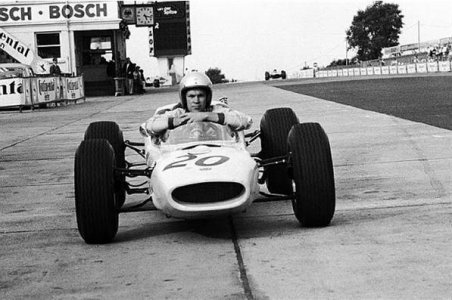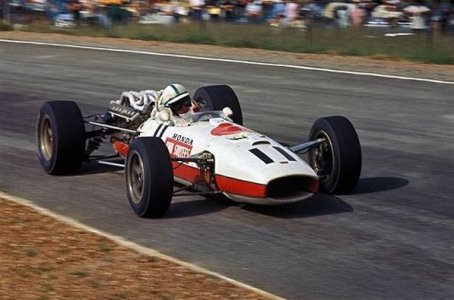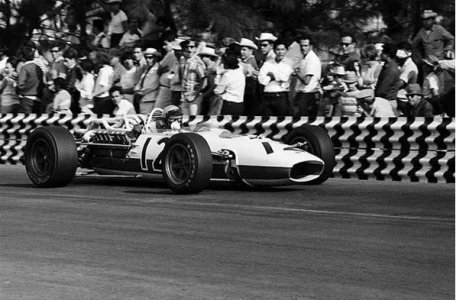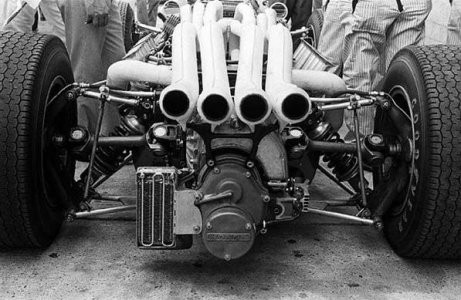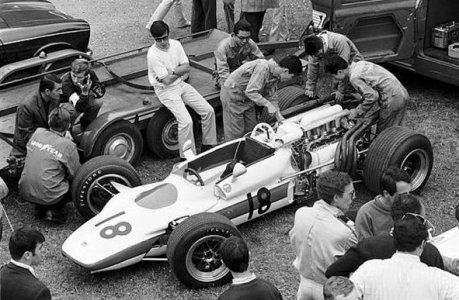Article
It may have been Jenson Button’s maiden win, but Honda’s Hungarian Grand Prix triumph wasn’t the Japanese team’s first. Delve deep into the history books and you will discover it was actually the third time a works Honda squad has tasted victory.
In recent times the Japanese car manufacturer is best remembered as an engine supplier, but for just over four years during the late 1960s Honda competed as a fully-fledged Formula One works team. Indeed, during this earlier incarnation, Honda were by no means strangers to success, claiming two Grand Prix victories in as many seasons - a full 40 years before Button’s recent triumph.
Honda’s first foray into Formula One racing came at the 1964 German Grand Prix, where the team entered a single V12-engined car, driven by the relatively unknown American, Ronnie Bucknum. After qualifying at the back of the grid, Bucknum crashed out the race following a steering failure, leaving him with four stitches and a bruised knee. Damage to the car meant the team missed the next round in Austria, before returning for the final two races in Italy and the US. Bucknam retired from both.
Undeterred, Honda entered the 1965 season with added gusto, pairing Bucknum with another American, Richie Ginther, who brought with him Formula One experience from the likes of Ferrari and BRM. After a shaky start in Monaco, where both drivers retired, performance improved and in Belgium Ginther scored the team’s first point after finishing sixth - a feat he repeated in the Dutch Grand Prix. The real breakthrough, however, came at the season finale in Mexico, where Ginther crossed the line first to take Honda’s maiden Formula One victory.
Unfortunately for Honda, the win was also the last under the 1.5-litre engine formula. A new 3-litre requirement was introduced for 1966 and the team struggled to adapt. In fact, they only appeared at the final three rounds of the season, with Ginther’s fourth place in Mexico their best result.
But at the start of 1967, with Ginther and Bucknum departed, Honda returned to the podium with a vengeance courtesy of their new sole driver, John Surtees. Still using the team’s 1966 RA273 machine, former world champion Surtees finished third at the season opener in South Africa. A string of retirements followed, but then in Italy the new RA300 arrived, combining Lola’s chassis know-how with Honda’s ever-improving V12. It won first time out and the team went on to finish an admirable fourth in the constructors’ championship.
Its successor, the RA301, proved unreliable in the opening rounds of 1968, but in the meantime Soichiro Honda was busy developing his radical RA302. With its lightweight magnesium chassis and air-cooled engine, the ambitious design went well in testing, prompting Honda to go for an early debut in France. But Surtees insisted the car wasn’t race ready, so instead driving duties went to French veteran Jo Schlesser. Surtees’ fears were tragically confirmed when Schlesser lost control at speed and was killed instantly after the car crashed and burst into flames.
The RA302 was never to race again, and after seeing out the season with the RA301, Honda withdrew from the sport completely. It would be more than 35 years before the team’s famous white and red livery again graced the grid.


